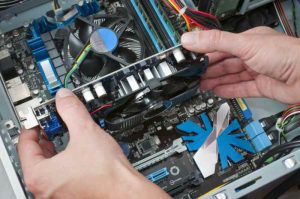
Step into the realm of Data communication protocols where the magic of networking unfolds before your eyes. From the basics to the cutting-edge trends, get ready for an exhilarating journey through the world of protocols!
Discover the backbone of efficient and secure data transmission and dive deep into the intricate web of wired and wireless protocols that power our digital world.
Overview of Data Communication Protocols

Data communication protocols are a set of rules or standards that define the procedures for transmitting data between devices in a network. These protocols ensure that data is sent and received correctly, efficiently, and securely.
Popular Data Communication Protocols
- Transmission Control Protocol (TCP): TCP is a connection-oriented protocol that guarantees the reliable delivery of data over a network.
- Internet Protocol (IP): IP is responsible for addressing and routing packets of data so they can be sent across networks.
- HyperText Transfer Protocol (HTTP): HTTP is used for transmitting web pages and other content on the World Wide Web.
- Simple Mail Transfer Protocol (SMTP): SMTP is used for sending email messages between servers.
Importance of Data Communication Protocols
Data communication protocols play a crucial role in ensuring the efficient and secure transmission of data. By following a set of standardized rules, protocols help in error detection and correction, data integrity, and data encryption to protect sensitive information. Without these protocols, communication between devices would be chaotic and unreliable.
Types of Data Communication Protocols

When it comes to data communication protocols, there are various types that serve different purposes and operate in diverse environments.
Wired vs. Wireless Data Communication Protocols
In the realm of data communication, wired and wireless protocols play a crucial role in transmitting information. Wired protocols, such as Ethernet, utilize physical cables to establish connections, offering stable and reliable data transmission. On the other hand, wireless protocols, like Wi-Fi or Bluetooth, enable communication without the need for physical connections, providing greater flexibility and mobility. While wired protocols are known for their security and speed, wireless protocols offer convenience and accessibility.
TCP/IP, UDP, HTTP, and FTP Protocols
TCP/IP (Transmission Control Protocol/Internet Protocol) is a reliable and connection-oriented protocol used for transmitting data over networks. UDP (User Datagram Protocol), on the other hand, is a connectionless protocol that focuses on speed and efficiency, making it suitable for real-time applications such as video streaming. HTTP (Hypertext Transfer Protocol) is a protocol for transferring hypertext documents on the web, defining how messages are formatted and transmitted.
FTP (File Transfer Protocol) is specifically designed for transferring files between a client and a server, ensuring secure and efficient data exchange.
Error Detection and Correction Protocols
Error detection and correction protocols are essential in data communication to ensure the integrity and accuracy of transmitted data. These protocols help identify errors that may occur during transmission and apply mechanisms to correct them, preventing data loss or corruption. Examples of error detection and correction techniques include parity checks, checksums, and cyclic redundancy checks (CRC), which play a vital role in maintaining data reliability across networks.
Protocol Stack Layers
In the context of data communication protocols, understanding the OSI model and its seven layers is crucial for efficient communication between devices.The OSI (Open Systems Interconnection) model consists of seven layers, each serving a specific function in the communication process. These layers are designed to ensure seamless data transmission and reception between devices.
Layer 1: Physical Layer
The Physical Layer is responsible for the actual physical connection between devices, including the transmission of raw data bits over a communication channel. Examples of protocols operating at this layer include Ethernet, Wi-Fi, and Bluetooth.
Layer 2: Data Link Layer
The Data Link Layer is focused on node-to-node communication, handling errors in the physical layer and ensuring data integrity. Protocols such as Ethernet, PPP (Point-to-Point Protocol), and HDLC (High-Level Data Link Control) operate at this layer.
Layer 3: Network Layer
The Network Layer is responsible for routing data packets between different networks, enabling communication between devices on separate networks. Examples of protocols operating at this layer include IP (Internet Protocol), ICMP (Internet Control Message Protocol), and ARP (Address Resolution Protocol).
Layer 4: Transport Layer
The Transport Layer ensures end-to-end communication, handling data segmentation, flow control, and error correction. Protocols such as TCP (Transmission Control Protocol) and UDP (User Datagram Protocol) operate at this layer.
Layer 5: Session Layer
The Session Layer establishes, maintains, and terminates communication sessions between applications. Protocols like SSL/TLS (Secure Sockets Layer/Transport Layer Security) operate at this layer to provide secure communication.
Layer 6: Presentation Layer
The Presentation Layer is responsible for data translation, encryption, and compression to ensure compatibility between different systems. Protocols like MIME (Multipurpose Internet Mail Extensions) operate at this layer.
Layer 7: Application Layer
The Application Layer interacts directly with the end-user applications, providing network services such as email, web browsing, and file transfers. Protocols like HTTP (Hypertext Transfer Protocol), FTP (File Transfer Protocol), and SMTP (Simple Mail Transfer Protocol) operate at this layer.
Protocol Analysis Tools
Protocol analysis tools are essential for network administrators and engineers to analyze data communication protocols, troubleshoot network issues, and ensure smooth operation of networks. These tools help in monitoring and analyzing network traffic, identifying problems, and optimizing network performance.Protocol analyzers, also known as packet sniffers, are commonly used tools for protocol analysis. They capture and decode network traffic, providing detailed information about the data packets being transmitted.
By examining the packet headers and payloads, protocol analyzers can help in detecting errors, identifying performance bottlenecks, and diagnosing network issues.
Wireshark
Wireshark is a popular open-source protocol analyzer that allows users to capture and analyze network traffic in real-time. It supports a wide range of protocols and provides detailed packet analysis, including protocol decodes, packet timing, and traffic statistics. Wireshark is widely used for troubleshooting network problems, security analysis, and network protocol development.
TCPDump
TCPDump is another command-line packet analyzer that is commonly used for capturing and analyzing network traffic. It provides similar functionality to Wireshark but is more lightweight and suitable for use on Unix-based systems. TCPDump can capture packets in real-time or read from packet capture files, making it a versatile tool for network analysis and troubleshooting.
NetFlow Analyzer
NetFlow Analyzer is a network traffic analysis tool that collects and analyzes flow data from routers and switches. It provides insights into network traffic patterns, bandwidth usage, and application performance. By analyzing NetFlow data, network administrators can optimize network resources, detect network anomalies, and troubleshoot performance issues effectively.
Emerging Trends in Data Communication Protocols
With the rapid advancements in technology, data communication protocols are continuously evolving to meet the demands of modern networking systems. Let’s delve into some of the emerging trends shaping the landscape of data communication protocols.
Impact of IoT on Data Communication Protocols
The Internet of Things (IoT) has revolutionized the way devices communicate and share data. With the proliferation of IoT devices, there is a growing need for efficient and secure data communication protocols to handle the massive amount of data generated. Protocols like MQTT and CoAP have emerged as popular choices for IoT communication, offering lightweight and low-latency solutions for connecting devices in the IoT ecosystem.
Role of AI and Machine Learning in Enhancing Protocol Efficiency
Artificial Intelligence (AI) and Machine Learning are playing a crucial role in optimizing data communication protocols. By leveraging AI algorithms, protocols can adapt to network conditions in real-time, ensuring optimal performance and reliability. Machine learning techniques can also be used to analyze network traffic patterns and predict potential bottlenecks, enabling proactive measures to enhance protocol efficiency.
Challenges and Opportunities in the Evolution of Data Communication Protocols
As data communication protocols continue to evolve, they face a myriad of challenges and opportunities. One of the key challenges is ensuring interoperability between different protocols and devices, especially in heterogeneous network environments. However, this evolution also presents opportunities for innovation, such as the development of new protocols that prioritize security, scalability, and efficiency to meet the demands of emerging technologies like 5G and edge computing.
Conclusion
As we wrap up our exploration of Data communication protocols, we’ve uncovered the crucial role they play in shaping our interconnected world. From error detection to IoT impacts, the future of protocols is indeed a fascinating landscape to behold.
Answers to Common Questions
How do data communication protocols ensure secure transmission?
Data communication protocols use encryption methods to secure data during transmission, preventing unauthorized access.
What is the role of error detection protocols?
Error detection protocols help in identifying and correcting errors that may occur during data transmission, ensuring data integrity.
How does the OSI model relate to data communication protocols?
The OSI model provides a framework for understanding how different protocols operate at specific layers, ensuring seamless communication between devices.







